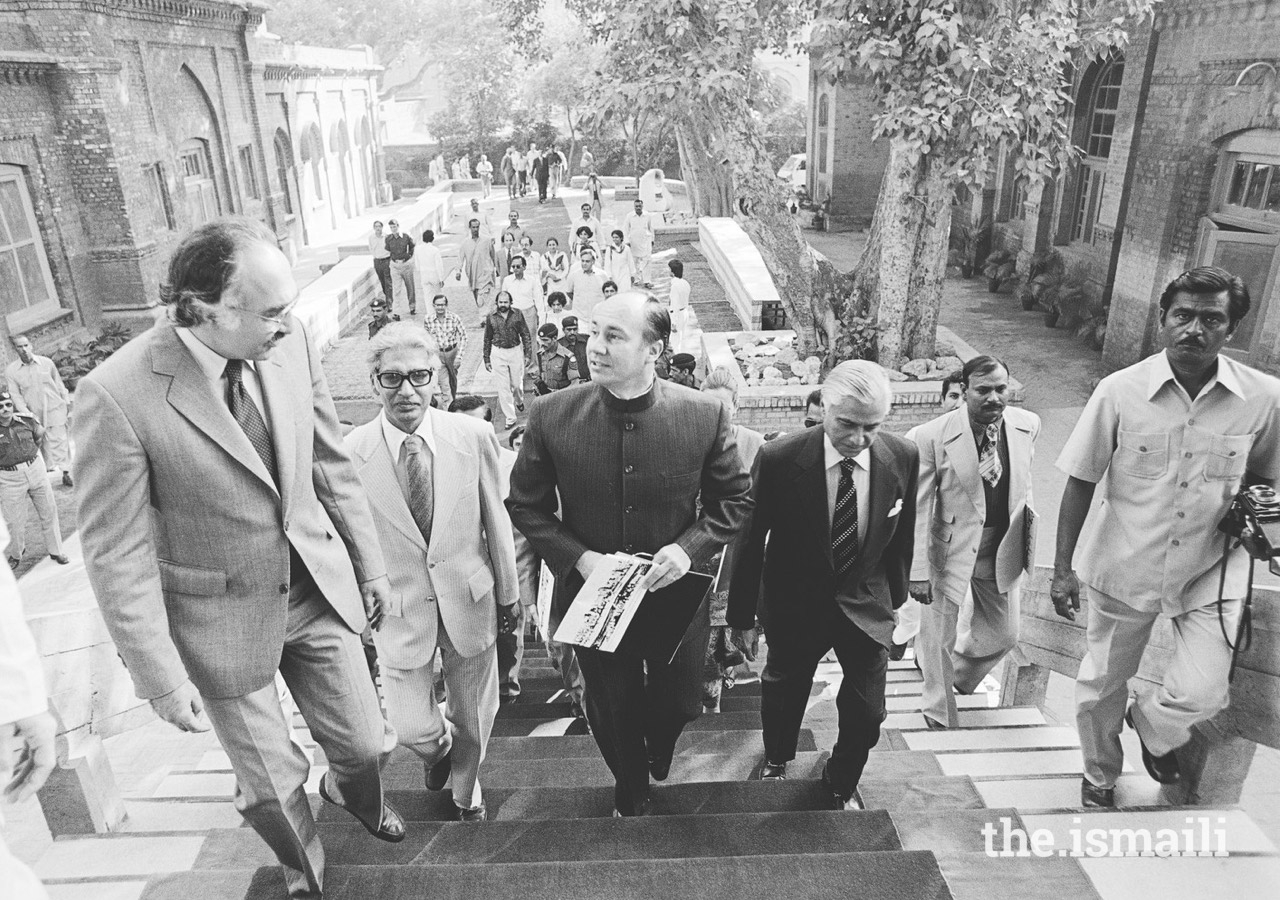Providing insight into a world foregone, into a life of majesty, of ancient kings and emperors, the conservation and revitalization of heritage not only revives the past, but bridges an important gap — as only with the past firmly within our grasp are we able to fully understand our present and think creatively about our future.
As much as the majesty of the Alhambra Palace and the Royal Alcazar Palace are lauded and appreciated centuries after their grandeur, ruin, and subsequent restoration; South Asia, the former ground of Mughal splendor, renowned the world over, is home to many such sites of exceeding cultural and historical significance, albeit many in disrepair.
The Aga Khan Trust for Culture (AKTC) hopes to change that. The agency strives to be a catalyst for a better quality of life through: the preservation and revitalisation of cultural assets; the reinvigoration of cultural traditions; the creation of education programmes that foster mutual understanding; and, the identification of architectural excellence that positively impacts the way people live, work and interact.
The Trust’s Historic Cities Programme seeks to activate culture as an intellectual, economic, and aspirational generator for ideas that positively shape the future in ways that are meaningful, beneficial, and that will enhance quality of life. Having operated in Pakistan for over 30 years, AKTC has successfully restored and rehabilitated over 100 monuments, historic buildings, and public spaces. All this while demonstrating how culture — in many instances the only asset at the disposal of poor communities — can be a conduit for social and economic development. In doing so, AKTC has received a number of accolades, including prestigious heritage awards from the United Nations Educational, Scientific and Cultural Organisation (UNESCO).
The Walled City of Lahore was one such unique undertaking, and the site’s restoration was challenging by its very nature. Home to many notable Mughal-structures, such as the Wazir Khan Mosque, Badshahi Mosque, the Shahi Hammam and many more, the fact that the Walled City also housed residents, had to be taken into consideration, so as to not upend them.
Of the significance of the Walled City of Lahore, the CEO of the Aga Khan Cultural Services, Pakistan, an affiliate of AKTC, Mr Salman Beg noted that “Lahore encompasses the richest and densest concentration of historic Mughal sites across South Asia. Whereas India has sites scattered across various cities such as Agra, Delhi, etc., Lahore is home to some of the most glorious historic monuments that holds much cultural significance.”
Having revived lost forms of artistic skill and capacity such as the glazed tile mosaics, frescoes and calligraphy, the restoration aims not only to preserve these structures, but to make them relevant to contemporary needs by bringing new use and new life to them, thereby seeing them reintegrate into the urban fabric of daily life in the Walled City.
“It is only through restoration that AKTC can bring to light the technical competence of Muslim civilisations and highlight their wisdom and knowledge,” Mr Beg says on the significance of the revival of the Shahi Hammam, restored by AKTC in conjunction with the Walled City of Lahore Authority.
Mawlana Hazar Imam spoke of the spirit of revival and the history of Islamic architecture at the Aga Khan Award for Architecture Ceremony in Granada in 1998, saying “Skill, knowledge, and vision in the realm of architecture were once a hallmark of Islamic civilisations, and central to the identity of its peoples. The overarching goal of the Award is to stimulate the reawakening of that inheritance, and nurture its continuing evolution in contemporary terms, by seeking examples of creative solutions to the wide range of needs for buildings and public spaces.”
The Picture Wall, housed within the Lahore Fort, was also completely restored. Spanning half a kilometer and featuring one of the world’s largest murals, it was deemed worthy of inclusion in the UNESCO World Heritage List in 1981. All in all, the overall impact of AKTC’s intervention has largely impacted the quality of life, particularly with regard to improved housing conditions and urban services for local residents; as well as the presence of rehabilitated historic structures and improved access to landmark sites for tourists and residents alike..
At the very first cycle of the Aga Khan Award for Architecture presented at the Shalimar Gardens in Lahore in 1980, Mawlana Hazar Imam said, “We must learn to understand them [the monuments] well, not simply to preserve them as museums of past glories, but to feel in every part of them – a stone masonry, a brick dome, a window, an ornament, or a garden arrangement – that unique spirit, that unique way which made these monuments Islamic. Only then will we be able to impart the same spirit to the technical means and to the forms of today.”
“Pakistan possesses some of the wonders of classical Islamic architecture, like the gardens which surrounds us, some of the most genuine vernacular traditions… and some of the most important contemporary efforts within the Muslim world.”
The Aga Khan Trust for Culture, through its initiatives, is dedicated to not only improving society’s physical environment but, at an intrinsic level, provide an expression of human civilisation by reviewing the past, at a fixed point in time in the present, so that future generations may enjoy these tangible monuments to study humanity and understand their history and heritage in a broader cultural context.











